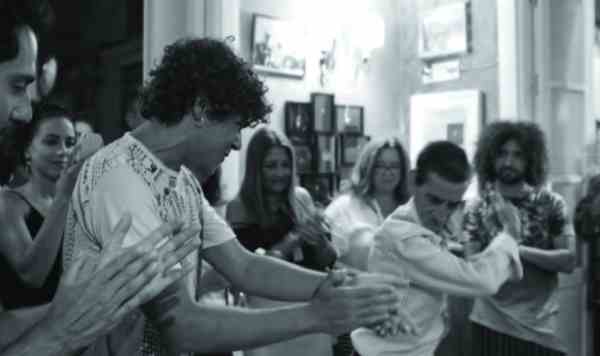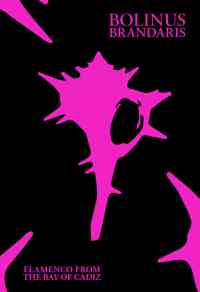

Various Artists
Considering how popular and well documented this music, birthed in the Andalusia region of deep Southwestern, coastal Spain, is, it might seem odd for Dust to Digital, a label known mostly for housing beautiful boxed sets of obscure 78 RPM sonic artifacts from around the globe, as well as vintage field recordings from Morocco to Mississippi, to focus its attention on it at all. But then, there must be some part of flamenco’s story missing. And it’s the desire to cut through the cheap, tourist-based flamenco performances and get to the music’s mysterious soul that is the reason Bolinus Brandaris- Flamenco from the Bay of Cadiz exists. This, like a number of their other releases, is a book first, though the accompanying 42-minutes of music on the CD explains in sound the story that the book tells. First, there’s the geographical place itself. Located just around the eastern edge of Spain’s southernmost point, the Bay of Cadiz features the fishing town San Fernando and its more attractive city to the north, Cadiz, both of which share a thin strip of the bay separated by a deceptive mud marsh that helped stop Napoleon from taking the area in the early 19th Century. Dive into this book and emerge with facts about the Bay’s naval importance, its ship building, and the sand-splattering levante winds coming up from the Sahara. There’s also a beginner’s flamenco glossary that serves as much more than a definition of certain terms. A breakdown of words, such as “flamenco” itself, shows the possibilities they have, something that helps play into mythical qualities this music has managed to hold onto despite its world-renown as well as decades of slick, pop make-overs. Names become expressions become instructions become possibilities.
It’s the claims of the performers on the disc, however, that are the most unique feature of the book. Singers and musicians such as Trini de la Isla and Jesus Castilla describe the feel of singing flamenco as a state of trance, something that can’t be taught, and something that must come from this incredibly specific geographical region. Indeed, to hear unaccompanied hardcore singing, something captured majestically on the track “Saeta” by El Niño del Parque, is to savor hypnotic, free-metered, immersive solo vocal performance at its finest. If one notices what sounds a bit like the Muslim call to prayer, it’s likely not a coincidence, considering this region was once populated by Arabs among others before there was ever a place known as Spain. Musicians claim to hear flamenco in the womb, so they know it from birth; guitarists such as Jesus Guerrero describes playing as something you study for a life time “until the day you die.” Their stories revel in the near-magical, the elusive. The music here was recorded in San Fernando by David Aglow, who has captured raw local guitar from Botswana and fiddle music from the South American Amazon, among other sounds. And because food and wine are so connected to flamenco’s existence, bars and restaurants were natural places to document much of the music here, away from tourism, in the center of the music’s heart, by players who may have released some recordings, but exist less for stardom and more to tap into flamenco’s essence.
And that they do. What’s clear is that the voice often comes first. The guitar tends to respond to the music’s call, which means a close listen reveals voice and guitar are never in sync, but instead weave around each other, with hand clapping and other percussion providing an anchor. Flamenco sub-categories, such as Cante Libre, a free-meter, almost dirge-like guitar and vocal duet, sounds as if it might actually cause the singer great pain to perform. Ana Polanco and Victor Rosa’s “Malagueña” features torrents of guitar notes, slashing chords, and vocals that could stir up tornados as they spin in and around the guitar. Elsewhere, the music features heart-stopping seguiriyas, more common bulerias, and rondeñas captured in pubs. Because of this collection’s label affiliation, it’s likely to hit the ears of hardcore global folk music enthusiasts in a way that popular flamenco recordings wouldn’t. To hear this collection is to hear flamenco in its birthplace, in homes and bars, as field recordings by musicians who pour their very lifeblood into music that has no need for popularity in order to exist in the first place. More importantly, it shows off the geography, history, mysteries, as well as musicians whose infatuating virtuosity and depth are almost otherworldly.
Further reading:
Search RootsWorld
|

